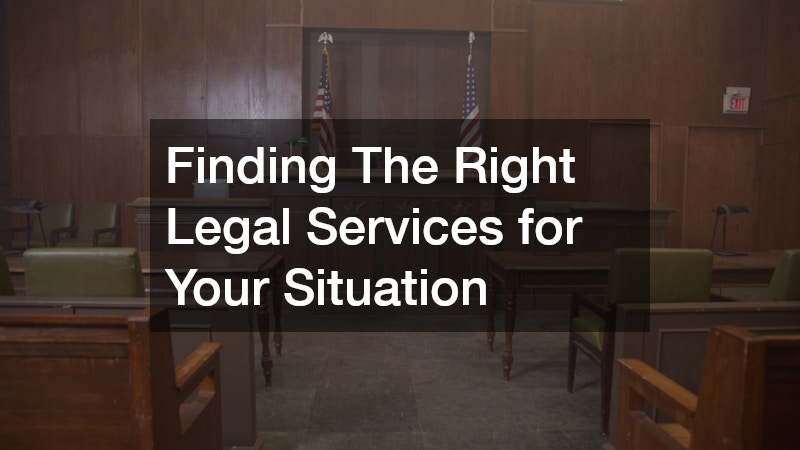
With living space becoming more limited and land prices rising, it’s a great idea to utilize every space in your home. According to the Washington Post, the average American home has a square footage of about 2,300. However, you can significantly increase your available living space by remodeling your walk in attic.
Transforming your attic from a dusty storage space into a livable area can provide your home with additional functional square footage and increase its overall value. The potential is limitless, whether you envision it as a cozy guest room, a tranquil home office, or a creative studio. This guide will delve into effective strategies for making the most of this often-overlooked space in your home.
1. Make Sure the Roof is in Good Condition

Before starting any renovations, it is essential to ensure that the roof of your walk in attic is in good condition. Here, you are to look for signs of leaks or water damage. Such leaks or structural damage can compromise the safety and functionality of space.
If you need clarification on the state of your attic’s roof, it is best to consult a commercial roofer for an inspection. If there is any roof damage, it is essential to address it before proceeding with any renovations. Depending on the extent of the damage, this might involve either repairs or roof replacement.
According to Forbes Home, a local roof repair will cost you between $150 and $1,500 for minor repairs. On the other hand, major ones run between $1,500 and $7,000. These repairs will save you from potential safety hazards and ensure your attic is fit for habitation.
If the damage is too extensive, you might need to install a new roof. HomeAdvisor says the average cost of installing a new roof is between $5,000 and $10,000. Though it may seem a hefty expense, it is worth the investment in the long run as it will provide you with a sturdy and safe living space.
2. You Don’t Want Any Water Getting in Your Attic
Leakages from the roof and walls can cause significant water damage to your attic. According to Ruby Home, water damage is among the most common homeowners’ insurance claims in the U.S., affecting about 14,000 people daily. Such damages typically demand drywall restoration, which can be costly. According to Forbes Home, it can cost between $20,000 to $100,000, depending on the location and extent of the damage.
Water damage can also cause significant health risks from the growth of mold and mildew. In turn, mold exposure can lead to respiratory illnesses, allergies, and other health problems. Therefore, taking preventive measures to keep water out of your walk in attic is also crucial.
Waterproofing your attic is an efficient way to avert such risks. This process typically involves coating the inside of your attic with waterproof materials like rubber, latex, or polyethylene. Sealing any cracks and holes will help keep water from seeping through the walls and roof of your attic. Don’t hesitate to call in a local waterproofing company to protect your attic.
3. Clear your Roof of any Debris
Once you have addressed potential water damage and leaks, keeping your walk in attic protected by keeping your roof clear of debris is crucial. Leaves, branches, and other debris can accumulate on your roof and clog gutters and drains. Such waste can lead to water pooling on the roof and potentially causing damage.
To prevent this problem from happening, make sure to check and clean your roof regularly. Sweep off any debris, remove leaves from the gutters, and trim any overhanging branches that could fall onto your roof. This measure will prevent water damage and maintain the structural integrity of your roof.
While you can do this yourself, you are advised to hire roof cleaning service professionals at least once a year for a thorough cleaning. According to Today’s Homeowner, the average cost for roof cleaning is $255 – $1,190. However, this may vary depending on your location and the roof size. These services also include soft and chemical cleaning methods that can help remove mold or mildew growth on your roof, bringing us to the next point.
4. Remove any Mold from Your Attic
According to the Centers for Disease Control and Prevention, the most typical indoor molds are Penicillium, Aspergillus, and Cladosporium. Indoor mold can grow on paints, wallpaper, insulation, drywall, carpet, fabric, and upholstery. Mold and mildew growth in your attic can cause significant structural damage. These include weakening the wooden supports, damaging drywall and insulation, and even causing rot.
Moreover, mold in the attic can also pose various health risks. According to the U.S. Environmental Protection Agency, these include allergic reactions, respiratory infections, and aggravation of asthma symptoms. Therefore, addressing any mold issues before renovating your walk in attic is crucial.
To find mold growth, look out for a musty smell, discoloration on walls or ceilings, or visible mold patches. Seek mold removal services immediately if you find any growth in your attic. According to Forbes Home, the average cost for mold removal is $2.50 per square foot. However, this may vary depending on the extent of the mold growth and the method used in its removal.
Various approaches are applied to mold removal; some are more invasive than others, and the cost will reflect this. These include commercial cleaning solutions or natural remedies like vinegar and baking soda. A professional mold removal service will determine the best method to remove the mold effectively and prevent it from coming back.
However, prevention is always better than cure. Therefore, taking all the necessary precautions to prevent mold growth in your attic is essential. Regular inspections and cleaning of leaking sources can help significantly prevent mold growth.
5. Insulation is Important

Insulation is crucial in keeping your walk in attic at a consistent temperature and preventing water damage. It also helps to lower energy costs by reducing heat loss during the colder months and trapping cool air during warmer months. According to Energy Star, insulating your home could save up to 15% on energy bills. Such benefits are useful, especially when converting the attic into a livable space.
The type of insulation used can vary depending on your location, budget, and personal preferences. The most common types include fiberglass batts, cellulose, and spray foam insulation. Spray foam insulation is considered the best option for attics as it provides a tight seal and minimizes air leakage.
However, it is a delicate approach that requires a professional spray foam insulation company to ensure proper application. According to This Old House Insider, the average cost for spray foam insulation ranges from $1.25 to $1.50 per square foot, depending on your location and the thickness of insulation required.
Other types, like fiberglass batts and cellulose, are more affordable but may provide lesser insulation levels than spray foam. Nevertheless, proper installation is crucial for any insulation to be effective. A reliable insulation company will assess your needs and provide the best options. They will also ensure proper installation, reducing the risk of any future problems due to improper insulation application.
6. Install Gutters to Make Your Attic Livable

When converting your walk in attic into a livable space, it is crucial to install gutters and downspouts. Gutters help to direct water away from your home’s walls. This measure prevents water leaks to the attic that could damage and compromise its structural integrity.
The cost of installing gutters varies depending on the material, length, and additional features such as leaf guards. Aluminum is the most popular material because it is rust-resistant, lightweight, and weatherproof. Aluminum gutters are also highly durable, lasting about 20 years on average. According to This Old House Insider, installing an aluminum gutter will cost you between $6 to $12 per linear foot.
Conversely, vinyl or PVC gutters are the most cost-friendly, ranging from $3 to $5 per linear foot. Vinyl gutters also last for about 20 years. Other materials include steel, copper, and zinc. Copper and zinc gutters are significantly more durable, lasting 50 and 80 years, respectively. They are also more costly, with copper ranging from $25 to $40, while zinc goes for $10 to $30 per linear foot.
Improperly installed gutters can cause water damage, leading to extensive repairs and mold growth in your attic. Therefore, getting a professional gutter installation service is essential to ensure proper installation. Depending on your budget and needs, an expert will also help you choose the best gutters for your home.
7. Make Sure the Windows and Siding are Up-to-Date
Windows and siding are crucial for a livable walk in attic. They help to maintain the temperature, prevent water leaks, and enhance the overall aesthetics of your home. High-quality windows and siding can also greatly increase your home’s value.
Therefore, ensuring your windows and siding are current when converting your attic into a livable space is essential. Older and damaged windows or siding can cause drafts, water leaks, and decrease energy efficiency in your home. A professional window and siding contractor can assess your needs and provide you with the best options for replacement.
So, what are the trendy siding window designs to consider? If you want a contemporary siding design, consider modern line sidings. For timeless designs, go for board and batten. Don’t forget to play with timeless neutral colors, textures, and contrasting accents.
For window designs, consider bay and bow, casement, and double-hung specialty windows. For instance, bay or bow windows allow massive natural light, while double-hung windows are the most simplistic.
The cost of replacing windows varies depending on size, material, and type. According to Forbes Home, the average cost of replacing a standard double-hung vinyl window ranges from $200 to $500. Labor costs range between $100 to $300 per window.
Similarly, the cost of siding installation varies depending on factors like material and size of your home. According to Forbes Home, vinyl siding is the most affordable option, ranging from $3 to $8 per square foot. However, there are different types of vinyl siding, including vinyl log siding at $3 to $5 and stone siding at $4 to $10. Other options include insulated vinyl siding at $4 to $10 and vinyl brick siding at $4 to $10.
Other materials like wood siding can cost between $5 – $15 per square foot, according to Home Guide. Remember that these prices do not include additional installation fees and labor costs. According to Forbes Home, the average cost of siding installation ranges from $1.50 to $4.50 per square
8. Ensure Adequate Ventilation

Proper ventilation is vital for a livable walk in attic. It maintains air quality, reduces humidity, and prevents the accumulation of harmful pollutants or allergens. Ventilation is especially essential in attics, which can become hot and stuffy without proper airflow.
There are several ways to ensure adequate ventilation in your attic. These include installing roof vents, ridge vents, or soffit vents. You can also consider mechanical ventilation systems, like exhaust fans or whole-house fans, which can help circulate air more efficiently.
The cost of installing ventilation systems can vary based on the type of ventilation and the size of your attic. Home Advisor reports that the average attic fan cost is $624. With labor costs, you can expect to pay anywhere from $369 to $913.
Improperly installed, or inadequate ventilation can lead to many problems, including mold growth and decreased energy efficiency. Therefore, consider hiring an experienced ventilation contractor to assess your needs and ensure correct installation. With the right ventilation, your converted walk in attic can be a comfortable and healthy space in your home.
Converting your walk in attic into a livable space is an excellent way to create more space for you and your family. With more space, you could have an extra bedroom, home office, or recreational room, significantly increasing your home’s property value. However, before starting this process, it is essential to consider the factors discussed in this guide. With these in mind, you can ensure that the extra room you create is safe, comfortable, and adds value to your home. Check out less-known ways to enhance your living spaces here.







